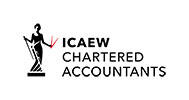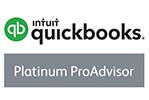Scottish Budget confirms 2022/23 income tax rates
The devolved Scottish parliament sets its own income tax rates and thresholds. In the latest Scottish Budget, the rates for the next tax year were announced. What’s the position for Scottish taxpayers?

Where an individual is a Scottish taxpayer in a particular tax year, they are subject to the Scottish Rates of Income Tax (SRIT). These are designated by Holyrood each year. The overall position can be confusing, as SRIT only applies to earnings, self-employment profits, rental income and pension income - the main UK rates continue to apply to other income, such as dividends. Additionally, the NI bands remain aligned with the UK.
The 2021 Scottish Budget confirmed that the starter and basic rate bands will increase with inflation for 2022/23, but that the higher bands will remain frozen. This means that for 2022/23, the SRIT will be as follows:
- 19% on earnings between £12,571 to £14,667
- 20% between £14,668 to £25,296
- 21% on the chunk between £25,297 to £43,662
- 41% on income between £43,663 to £150,000
- 46% on earnings above £150,000.
Related Topics
-
HMRC checks directors’ loans are paid up
HMRC is writing to agents to check corporation tax returns for previous years are correct as it used to be possible to add a future date for an anticipated loan repayment. What’s the issue and what should you do if your advisor receives a letter?
-
Working from home tax relief scrapped in Budget
Employees who are required to work from home are currently able to claim tax relief at a flat rate of £6 per week. That's changing from 6 April 2026. What's the full story?
-
Government quietly confirms change to key tax deduction
The headlines for individuals at last week's Budget were all about the income tax hikes. But the small print contained confirmation of another important change. What’s the full story?



 This website uses both its own and third-party cookies to analyze our services and navigation on our website in order to improve its contents (analytical purposes: measure visits and sources of web traffic). The legal basis is the consent of the user, except in the case of basic cookies, which are essential to navigate this website.
This website uses both its own and third-party cookies to analyze our services and navigation on our website in order to improve its contents (analytical purposes: measure visits and sources of web traffic). The legal basis is the consent of the user, except in the case of basic cookies, which are essential to navigate this website.